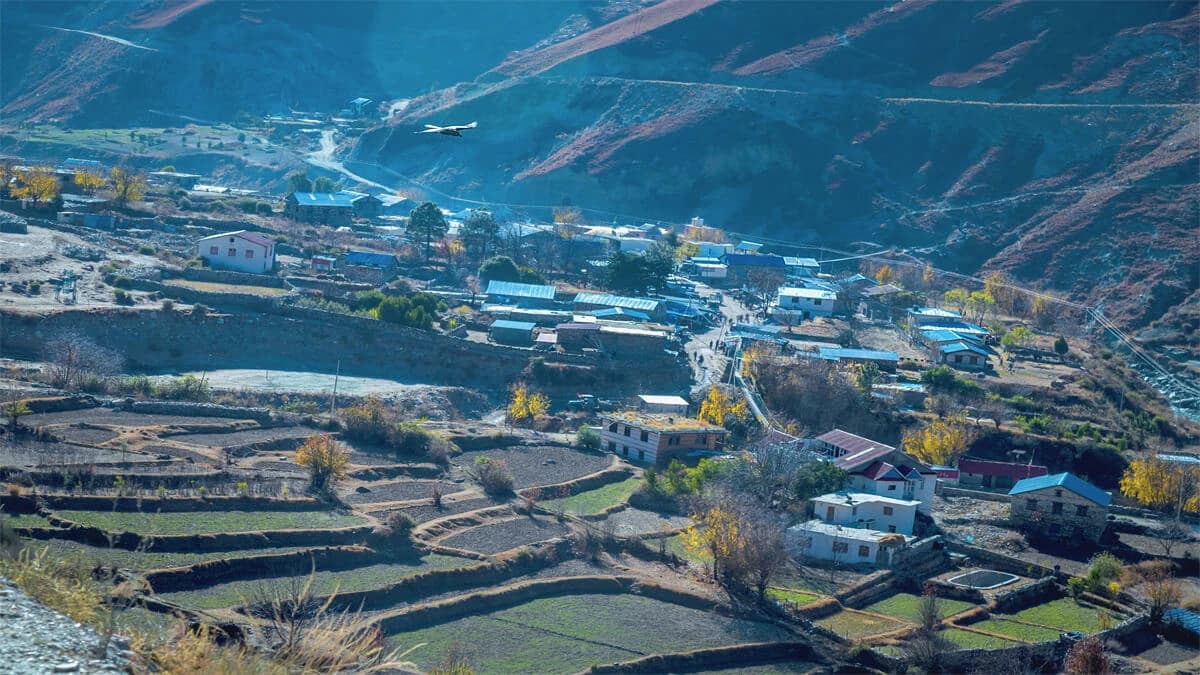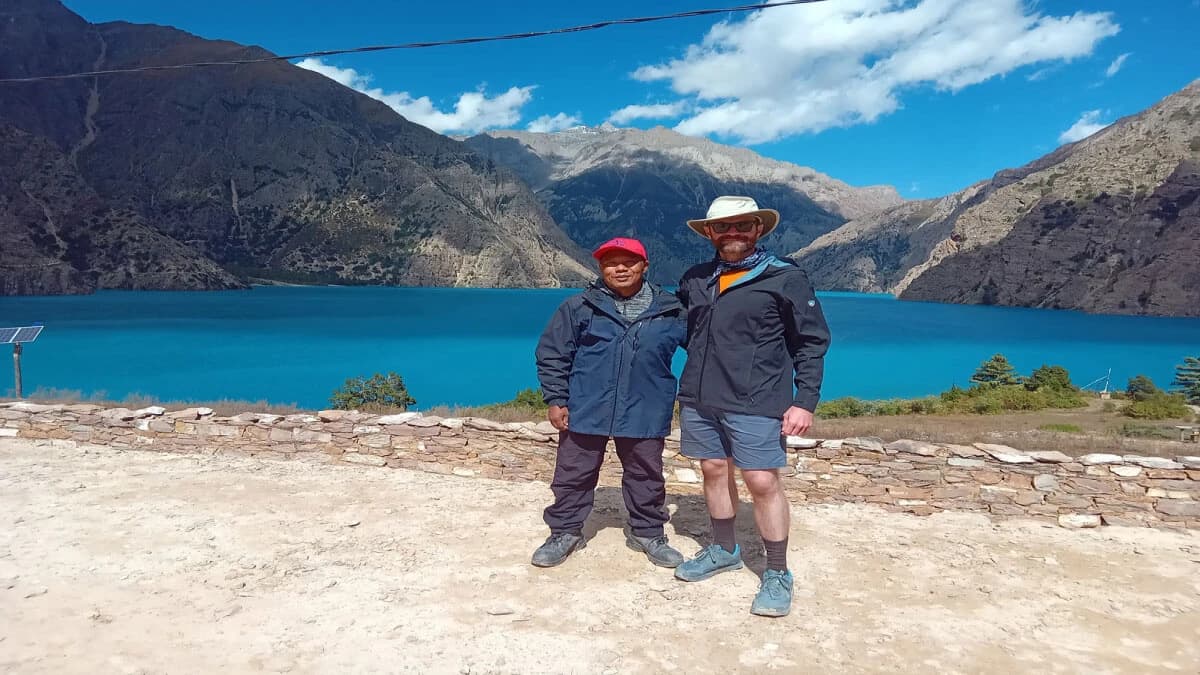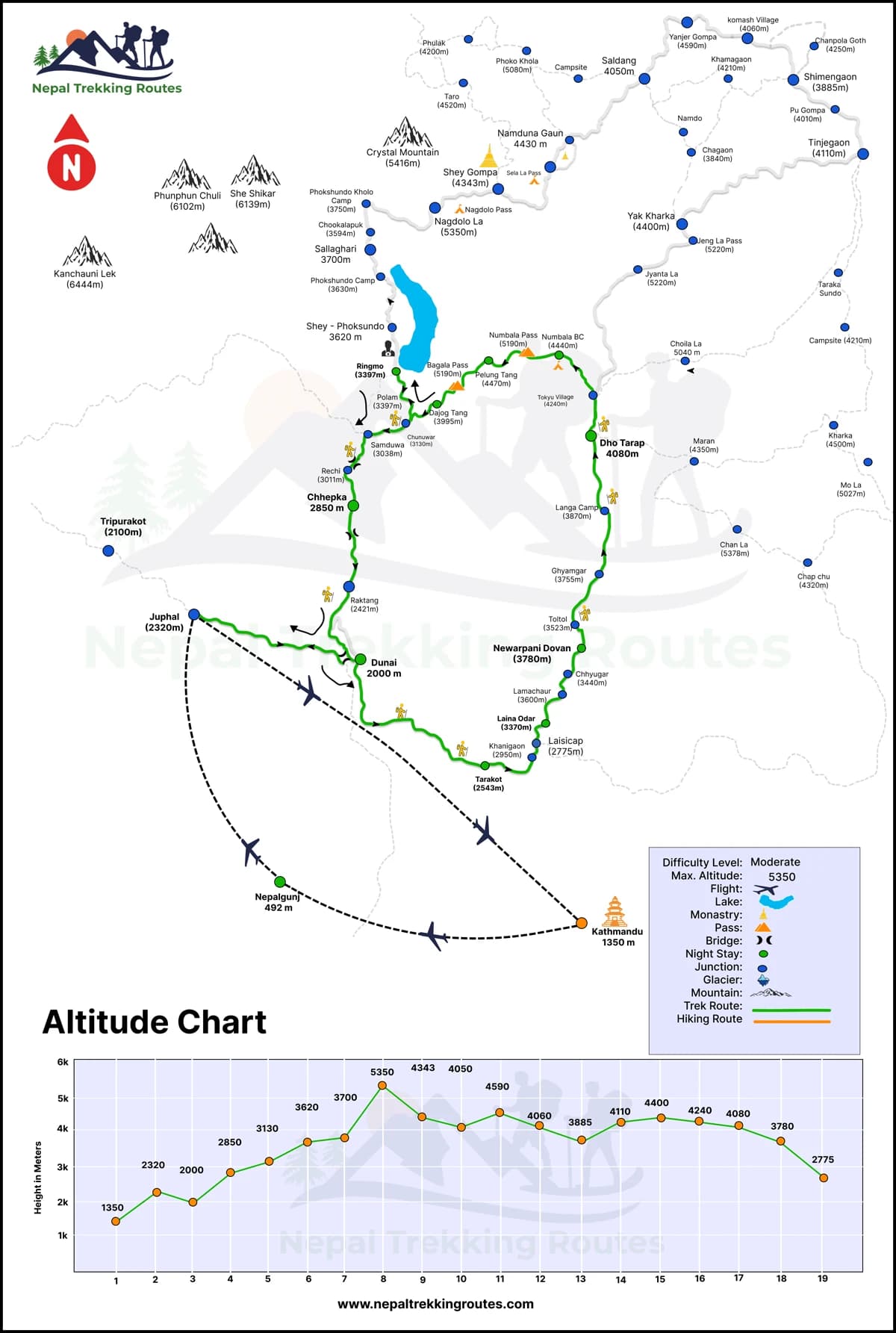Lower Dolpo Trek Overview
Lower Dolpo Trek is one of the best remote treks in Nepal. It offers you the Tibetan Buddhist and Bonpo religion found in the Dolpo region. The unique socio-cultural practices of these people in the hidden gem of the Nepalese Himalayas are the rewards of this trek.
Lower Dolpo trek takes you towards the deepest lake of Nepal. Shey Phoksundo Lake (145 m) is the wetland of Nepal declared in 2007 AD. This lake has been a boon for the conservation of the diverse biodiversity of this region.
You will visit the world’s highest-altitude permanent human settlement area called Dho Tarap. Once the Capital of Dolpo, this village is resided by the people of the Bonpo and Chaiba religions.
Among many cultural and religious shrines of the Lower Dolpo region, is Thasung Gompa. Located near Shey Phoksundo Lake, this monastery was built some 900 years ago. The people of this region built it to conserve the biodiversity of the lake surrounding.
This lake is situated in Shey Phoksundo National Park. It is the largest national park in Nepal that has protected a large species of wildlife and vegetation. The park houses 286 plants poplar, rhododendron, and bamboo dominant species. Likewise, you can find 6 reptiles, 29 butterfly species, and 200 species of birds.
Lower Dolpo Trekking Highlights
- Kathmandu-Juphal via Nepalgunj two-way scenic flight
- Numa La Pass (5,318m) and Baga La Pass (5,190m)
- Dho Tarap (4,090m), the world’s highest-altitude human settlement area
- Shey Phoksundo Lake, the deepest lake in Nepal
- Shey Phoksundo National Park, Nepal’s largest conservation area located in the Trans-Himalayan region
- 900-years-old Tshashung Gompa
- Lifestyle, culture, and tradition of Bonpo and Chaiba religious sects
- Hidden valleys Lower Dolpo region
- One of the best remote treks of Nepal is located close to the Tibetan Plateau
Lower Dolpo Trek Cost
Lower Dolpo trek cost depends upon a few responsible factors. The most common factors are trekking duration, the type of services you prefer, and the mode of transportation you use during the trip.
Likewise, the number of guides and porters also matters more. Last but not least, the cost of permits you need to visit a particular region is another important determinant of the overall cost of a Nepal trekking package.
There is always a chance to customize this trek. You can cut short this Nepal trekking package by removing two high passes. On the other hand, you can also extend this trek to the Upper Dolpo trek, Rara Lake trek, or the Upper Dolpo Mustang trek, etc.
To know more about the appropriate cost of the Lower Dolpo trek, you can contact us via available media. You can either make a phone call, send an email, or use WhatsApp or online booking services as well.
Lower Dolpo Trek Map
Lower Dolpo Trek begins from Dunai, the administrative headquarters of the Dolpo district. You can’t reach Dunai by road, but you have to fly from Kathmandu via Nepalgunj.
From Dunai, you move along Tarakot, Laina, and Nawarapani to reach Dho Tarap. Spending a day at this world’s highest permanent human settlement area, you continue the journey.
You then cross Numa La Pass (5,318 m) and Baga La Pass (5,190 m) and get to Ringmo Village. You have a spare day there to discover the beauty of Shey Phoksundo Lake.
Here, you visit the deepest lake of Nepal located in Shey Phoksundo National Park. It is the largest national park of Nepal conserving a large variety of wildlife and vegetation.
After that, you return to Juphal via Chhekpa Village along the Bheri River banks. From Juphal, again you use air services to reach Kathmandu via Nepalgunj.
Restricted Area Trekking (RAT)
Located in the Trans-Himalayan region of Nepal sharing its border with the Tibetan Plateau, Dolpo is a restricted area of Nepal. Being a restricted area, you need a special Nepal trekking permit.
There must be at least two members in a group that is accompanied by a registered trekking guide. For the special permit issued by the Immigration Department of Nepal, you have to pay some extra amount.
Free Individual Trekking (FIT) is not allowed here. The government of Nepal declared it a restricted area to conserve the sensitive bio and cultural diversity. More importantly, as Dolpo shares its border with the Tibetan Autonomous Region, the Government of Nepal imposed strict rules to keep its diplomacy with China intact.
How Difficult is Lower Dolpo Trek?
Lower Dolpo trek difficulty is measured based on trekking duration per day, altitude gained, and the condition of trails. In addition, whether you have to cross a high pass or not also plays a vital role.
Normally, you have to walk for about 6 hours in the high-altitude places. Walking along the rocky trails is not an easy task for beginners. If you have previous experience of trekking in Nepal, you can cover the specified distance easily.
You spend most of the days of the Lower Dolpo Trek itinerary in places above 2,500 m. Right from Tarakot (2,500 m) to Chhekpa (2,530 m), there is a chance for altitude sickness. To fight back against this health hazard, you must follow some preventive measures.
In some sections, the trails are not maintained well as it is a less frequented area due to remoteness. Making the trail by oneself and moving ahead may not be easy for everyone. On the other side, you have to pack some readymade food items during the trek because you won’t find teahouses en route.
The Lower Dolpo trek itinerary includes two high passes above 5,000 m in it. This is why, the level of difficulty has increased. Numa La Pass (5,318 m) and Baga La Pass (5,190 m) are the two passes you have to cross to reach Shey Phoksundo Lake from Dho Tarap. Although trekking to the top of these passes is hard, the rewards are beyond description!
Food and Accommodation During the Trek
Lower Dolpo trek is a combination of teahouse and camping trekking. The teahouses of this region provide you with basic facilities for food and accommodation. The typical Nepali cuisine: Daal Bhaat Tarkari Achar is very common during trekking in Nepal.
As this cuisine is rich in protein and carbohydrates, you can cover the long distance energetically. We, therefore, recommend you to have this as one meal a day. As the food items are prepared by using organic crops and vegetables, they are beneficial for health.
However, you have to go camping trekking after you cross Dho Tarap and before you reach Chhekpa. During this duration, your crew prepares the food items by using the stuff they have carried. You won’t have more choices here, but you will have more fun at night. The crew will perform cultural performances like singing and dancing to entertain you.
Talking about accommodation, teahouses provide you cozy room with a clean bed. The room can be single as well as double as per the situation and availability. As you need a sleeping bag for spending the night at the tented camp, it also helps you even in teahouses.
You may not find attached bathrooms in the teahouses. Next, you won’t find electricity in some parts of the Lower Dolpo region. Hence, you won’t be able to charge the gadgets you require during the journey. You may also not get hot water for drinking and bathing. If you need a hot shower or drinking water, you may have to pay an extra charge.




